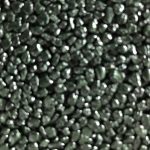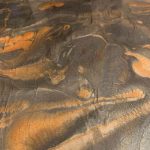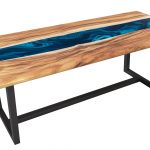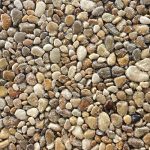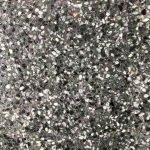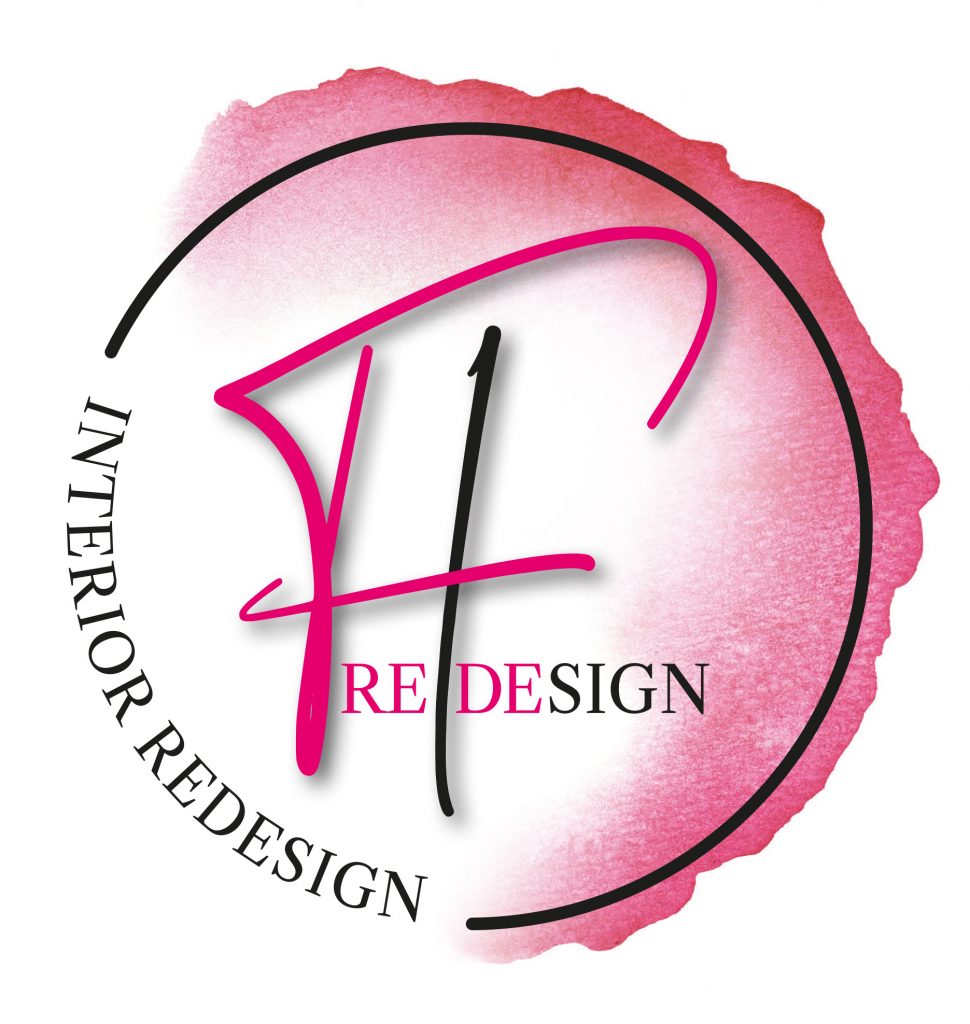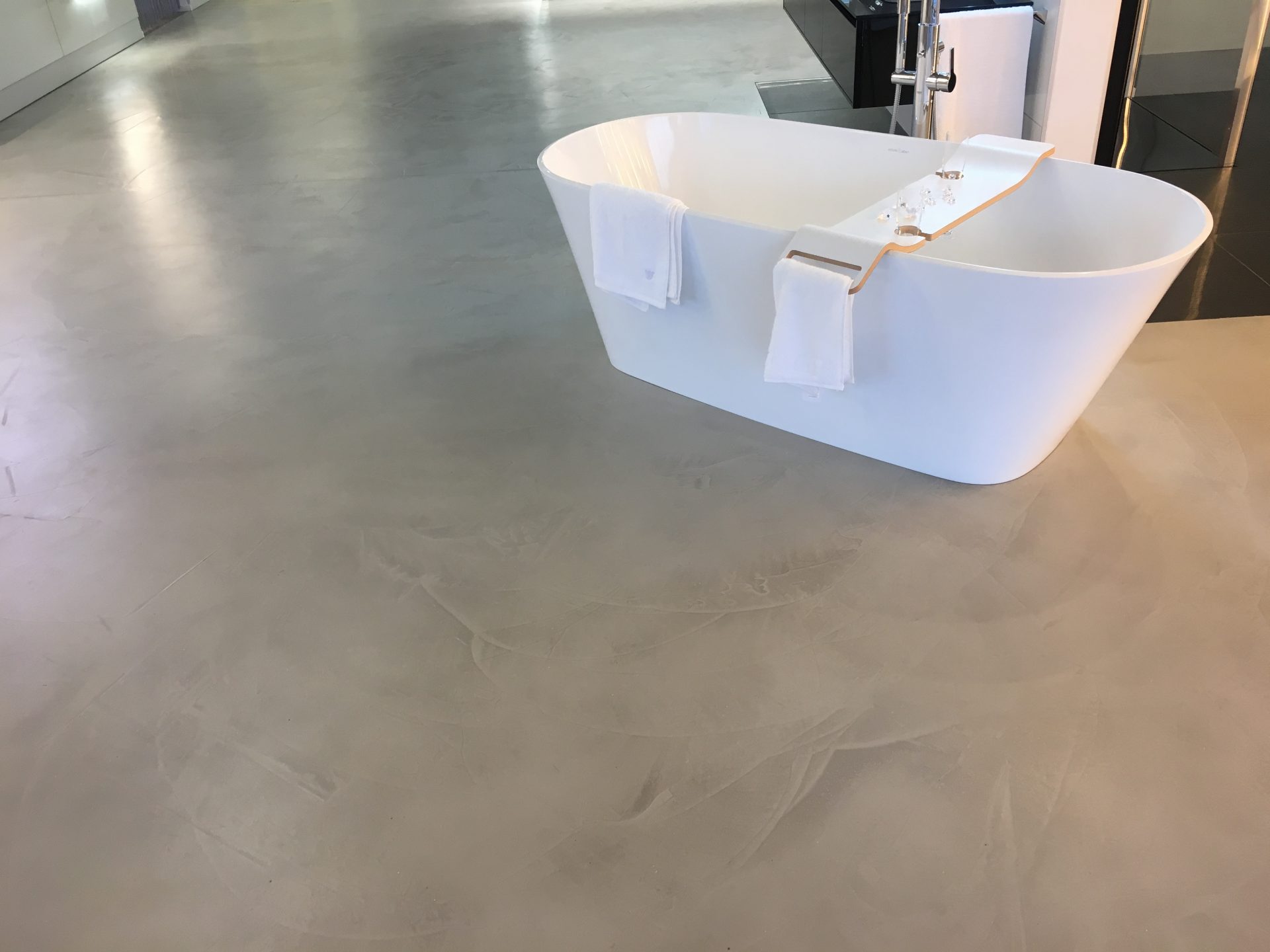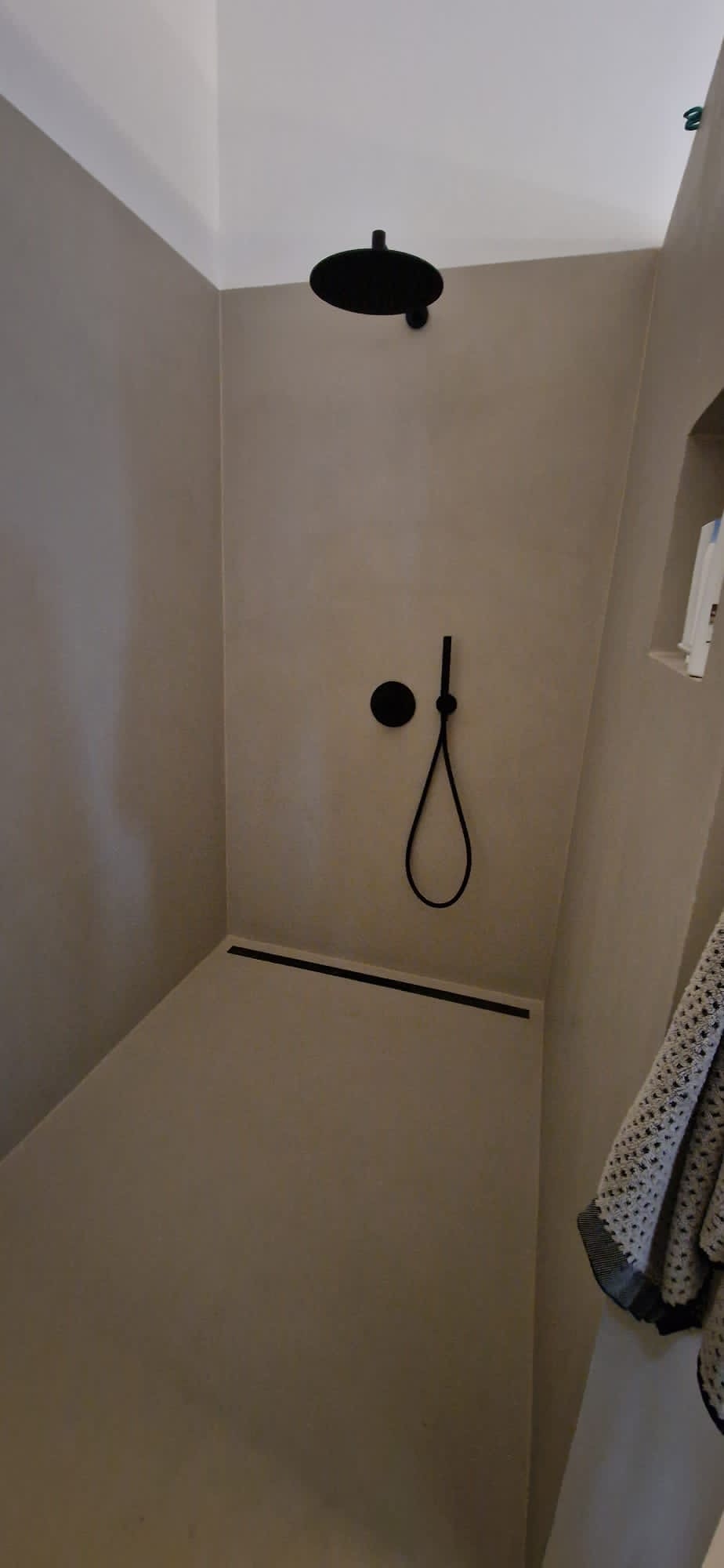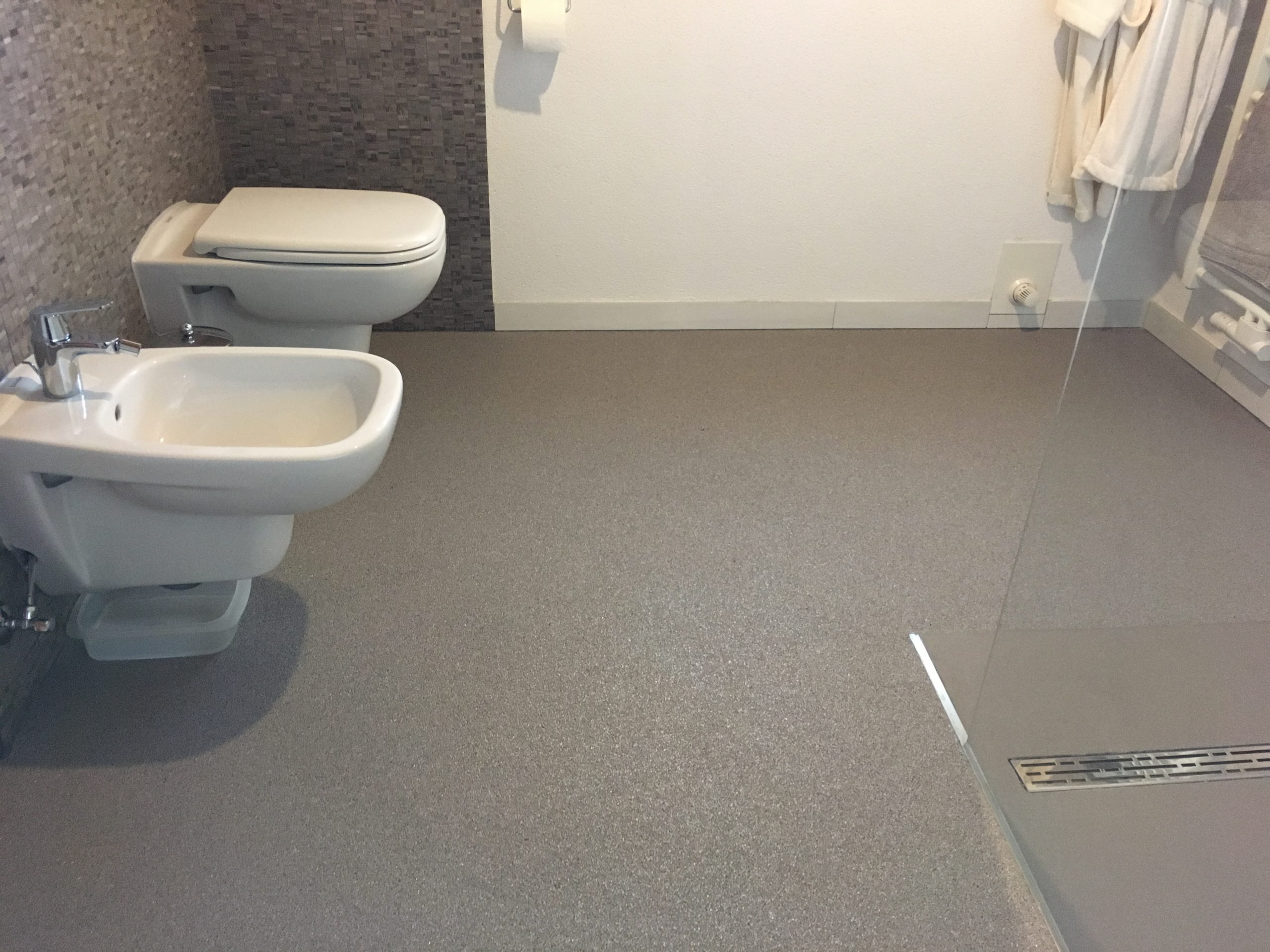Interior design, also known as interior design or home design, is a creative process of redesigning or remodeling interior spaces to define their appearance, function and aesthetic qualities without necessarily making structural changes. Unlike interior architecture, which may require structural changes such as demolishing walls or rearranging floor plans, interior design focuses on rearranging furniture, placing decorative items and adjusting colors to create a new and appealing space.
Contents
- Finding ideas, implementing plans: Frederike Hansen is your interior design professional
- Interior design for the home: rediscover your living space
- Interior design for vacation apartments: Redefining hospitality and comfort
- Interior design in gastronomy: redefining taste and ambience
- Interior design in the office: increasing efficiency, comfort and productivity
- Further services from Interior ReDesign FH
- Start planning now with Interior ReDesign FH
- Link collection
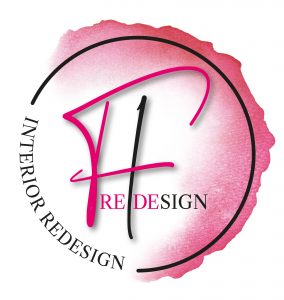
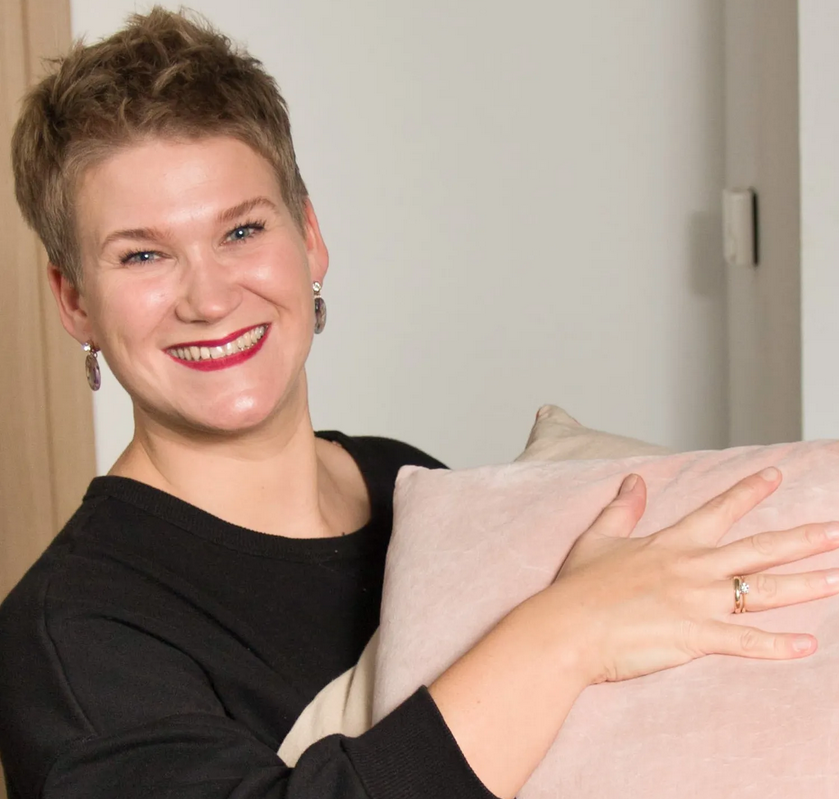
Finding ideas, implementing plans: Frederike Hansen is your interior design professional
Interior design offers the opportunity to design rooms in apartments, houses, offices or other interior spaces to make them functional, attractive and comfortable without having to carry out major structural interventions. To this end, we work together with designer Frederike Hansen.
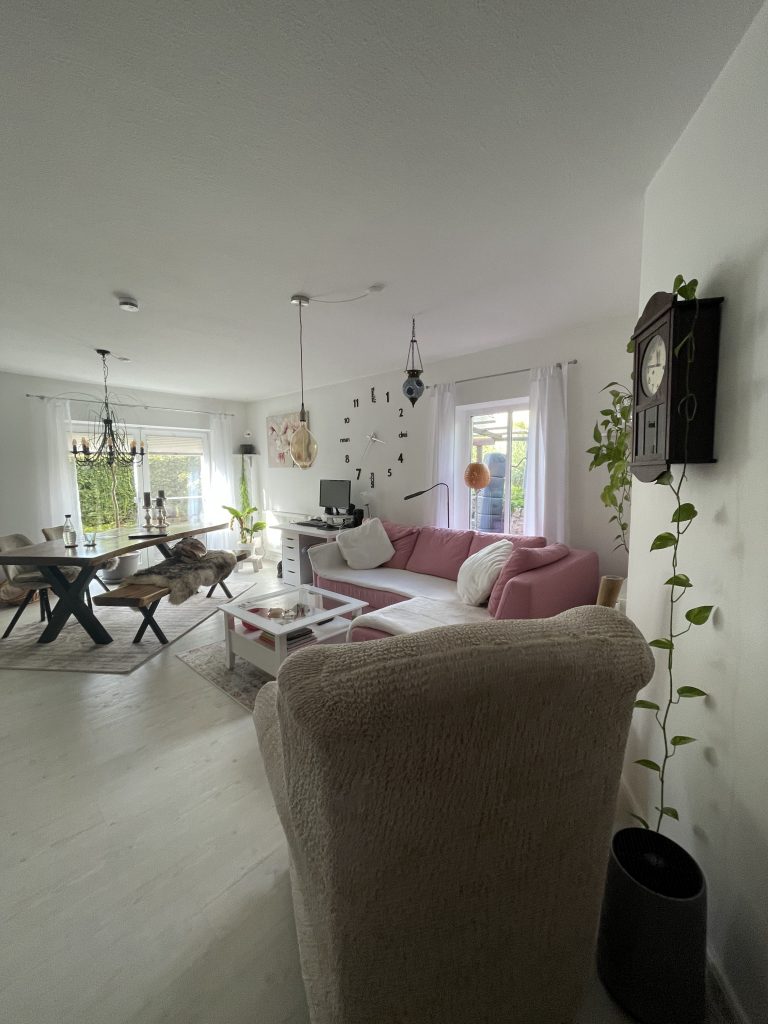
Here are some important aspects of interior design
- Furniture arrangement: The focus is often on the optimal arrangement of furniture to make the room functional and aesthetically pleasing. This can include the optimal positioning of sofas, tables, chairs and other furniture.
- Color choice: The choice of color palette can have a big impact on the atmosphere and appearance of a room. Interior design often involves the selection of colors for walls, ceilings, furniture and decorative items.
- Decoration: The selection and placement of decorative items such as artwork, curtains, rugs, cushions and lighting can enhance the room and add a personal touch.
- Use of existing resources: So-called interior redesign aims to make the best possible use of existing furniture and decorative items instead of purchasing new ones. This can be more cost-effective and promote sustainability.
- Functionality: Interior design can also influence the functionality of a room, for example by optimally designing the work area in an office or the dining area in the kitchen.
- Style and aesthetics: Interior design can incorporate different styles and aesthetic preferences to adapt a space to the tastes and needs of the occupants.
Frische Ideen durch Interior Design für Zuhause: Ihren Wohnraum neu entdecken
Your home is more than just a place to sleep and eat. It is a place that should reflect your personality and offer you comfort and security. It is therefore important to consider your home design concept in good time. Many ideas can be realized without major financial outlay or structural changes.
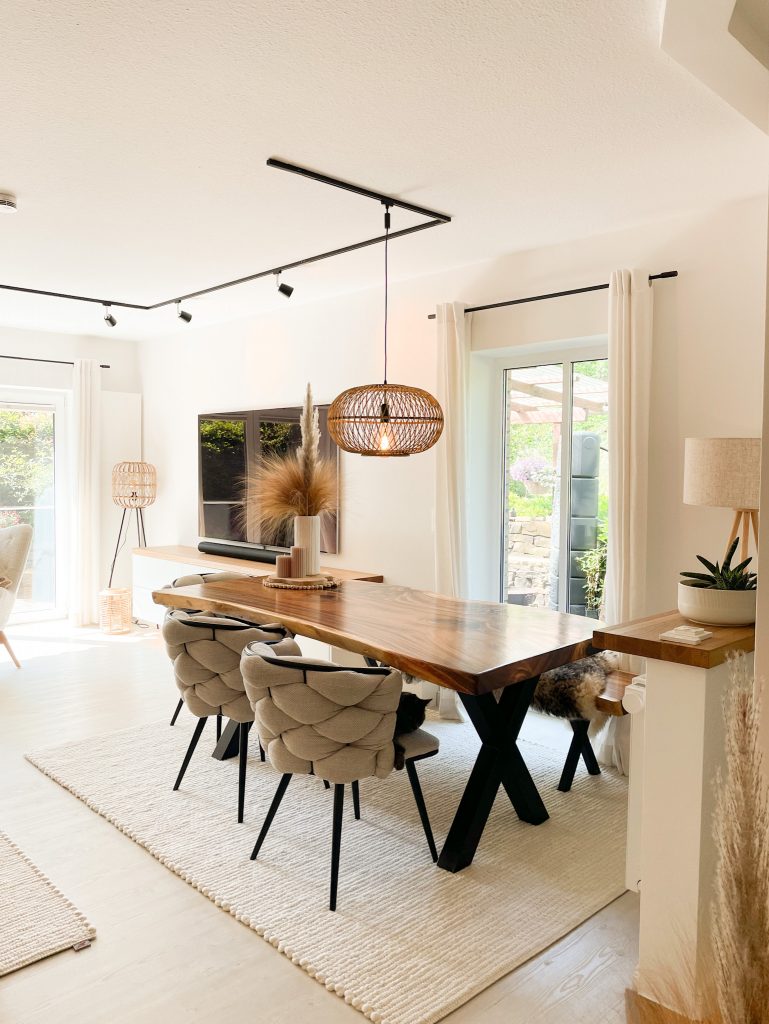
1. optimize furniture arrangement:
One of the easiest and most effective ways to define the look of a room is to arrange your furniture. Experiment with different layouts to make perfect use of the space and improve traffic flow. By thoughtfully placing sofas, tables and chairs, you can open up a room, let in more light and create a cozy atmosphere.
2. color choice and decoration:
Colors have a significant impact on the mood and ambience of a room. Consider whether a particular color palette could spice up your room. Wall colors, pillows, rugs or curtains can make an amazing difference. Decorative items such as artwork, mirrors and plants can add personality to your room and make the walls speak.
3. minimalism and order:
Less is often more. Think of your interior design as an opportunity to reduce clutter and only include things that you really need. A tidy room not only looks tidier, but also allows the remaining elements to shine and come into their own.
4. multifunctional furniture:
In small rooms or apartments, multifunctional furniture is a clever choice. An extendable dining table, a sofa bed or a wall-mounted folding table can make more versatile and efficient use of the space.
5. optimize lighting:
The right lighting can have a significant impact on the mood in a room. Think about how lamps and luminaires can give your room a pleasant atmosphere.
6. personal style:
Don’t forget that your home should be an expression of your personality. Add personal elements such as family photos, heirlooms or homemade artwork to give your space an individual touch.
Interior design is a refreshing way to enhance your living space. It allows you to fall in love with your home all over again and customize it to your needs and preferences. Whether you want to redesign just one room or your entire home, interior design can help you create your own personal paradise.
An interior design that impresses Interior design for vacation apartments: Redefining hospitality and comfort
Vacation rentals are now an extremely popular choice for travelers looking for cozy and individual accommodations. In this competitive market, it’s crucial that your vacation rental is not only functional, but also aesthetically pleasing to attract guests and generate positive reviews. This is where the concept of interior design for vacation rentals comes into play to optimize your guests’ stay while increasing your success as a landlord.
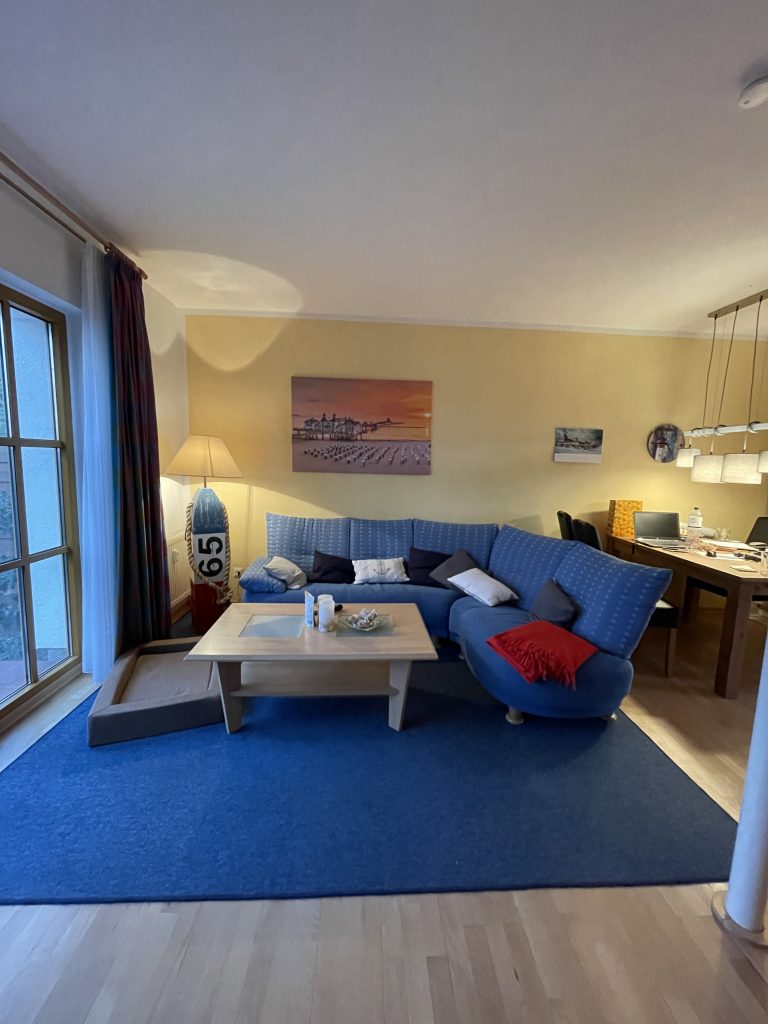
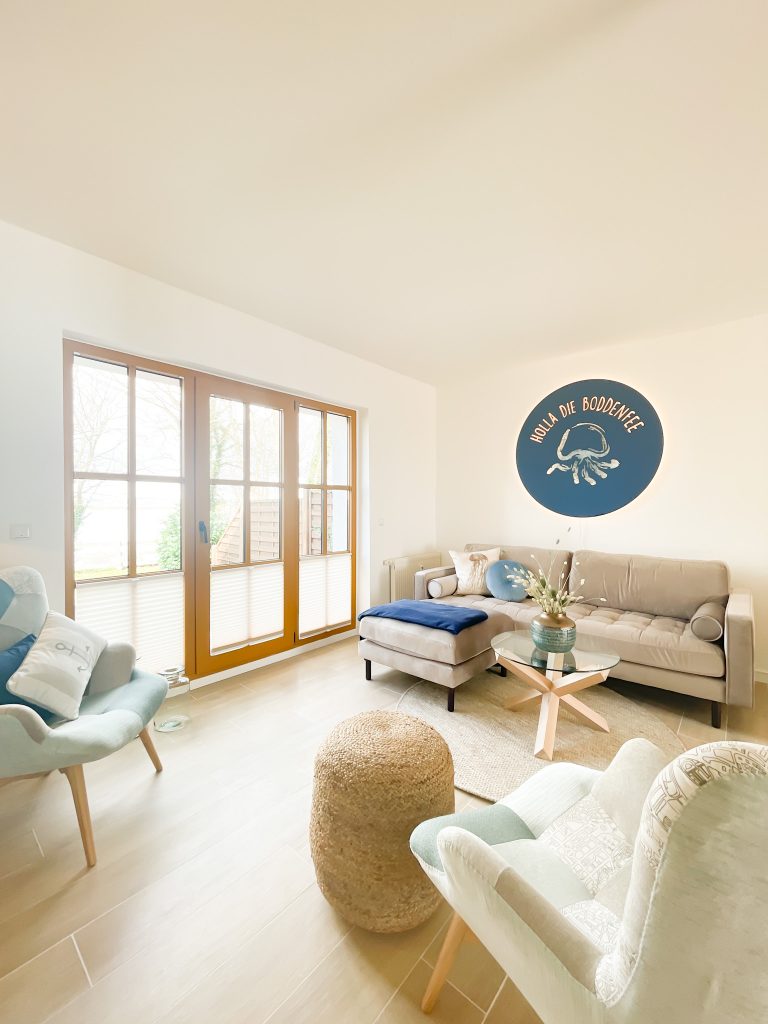
1. guest-oriented furniture arrangement:
Start by arranging your furniture to make the best use of the space. Create an open and inviting atmosphere that allows guests to feel comfortable and enjoy the space. Keep functionality in mind by providing comfortable seating, ample storage space and well-placed dining areas.
2. stylish decor and color choice:
The choice of colors and decorations should reflect the style and theme of your apartment. A consistent color scheme and tasteful décor elements, such as paintings, pillows, and rugs, can enhance the space and create a welcoming ambiance. Remember that the décor should be appealing to a wide audience.
A stylish option for floor design in vacation apartments and on terraces is the use of individual floor logos on quartz gravel. These works of art, called Qubo® Painting, are laid with a stone carpet without a visible transition and form a highlight in any room design.
3. comfortable bedrooms:
Bedrooms are a key area as this is where guests seek rest and relaxation. Invest in high-quality mattresses, bed linen and blackout curtains to ensure a restful night’s sleep. Make sure there is enough storage space for luggage and personal belongings.
4. functional kitchens and bathrooms:
Modern and well-equipped kitchens are a big plus for vacation rentals. Make sure that the kitchen contains all the necessary utensils and appliances. Bathrooms should also be clean, modern and well-equipped to provide guests with a pleasant experience.
5. technological conveniences:
In today’s digital era, guests often expect modern technology. Consider whether you can provide smart TVs, fast Wi-Fi, Bluetooth speakers or other amenities to enhance your guests’ stay.
6. personal touch:
Make a lasting impression by leaving your guests a personalized welcome or providing local recommendations for restaurants and activities. A little hospitality can go a long way to making your guests feel extra welcome.
7. regular maintenance:
Don’t forget to ensure regular maintenance and cleaning of your vacation rental. A clean and well-maintained space is crucial to keeping guests happy and getting positive reviews.
Interior design for vacation rentals is a big investment, but one that can pay off in increased bookings and positive guest experiences. It allows you to stand out from the competition, attract repeat guests and increase your success as a vacation rental owner. Remember that an appealing and comfortable interior can meet and exceed your guests’ expectations, leading to a successful and profitable vacation rental business.
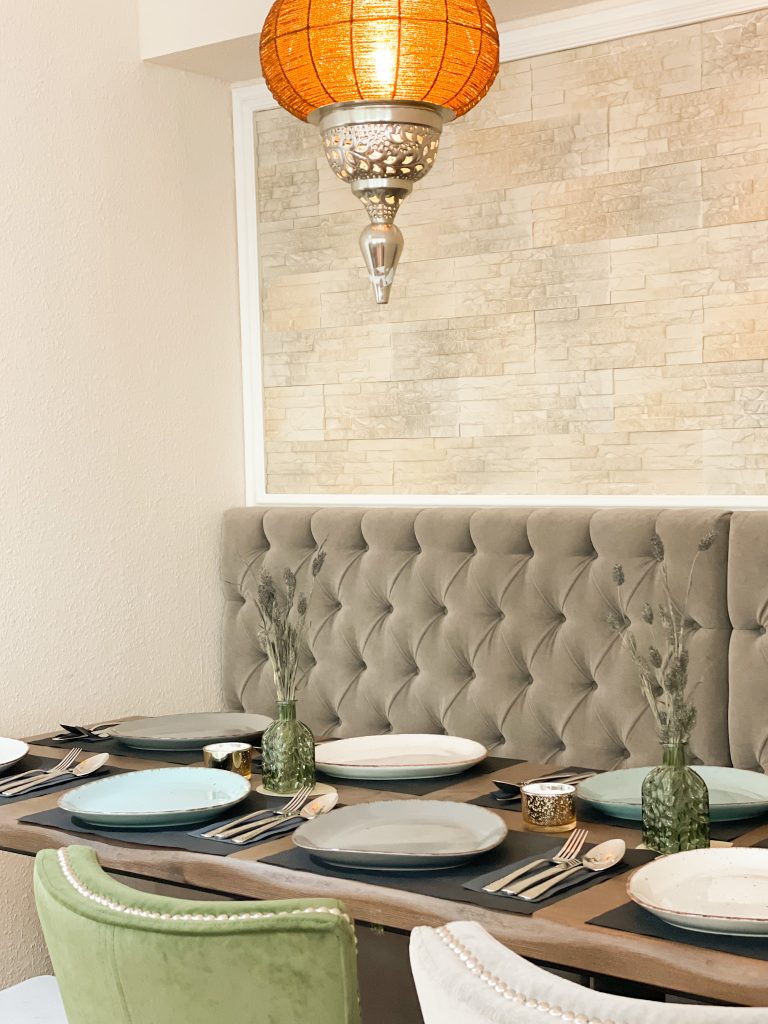
Interior design in gastronomy: Redefining taste and ambience
In the restaurant industry, the appearance of your restaurant is just as important as what is served on the plates. Thoughtful interior design can make the difference between a successful restaurant and an average dining room. It allows you to perfect the comfort and ambience to attract, delight and keep guests coming back for more.
1. create the perfect ambience:
The ambience of a restaurant has a significant influence on the culinary experience. Think about the feeling you want to convey – cozy and rustic, chic and modern or perhaps elegant and timeless? The choice of colors, lighting and materials plays a decisive role in creating the desired ambience.
2. maximum use of the space:
Efficient interior design is of crucial importance. Every square centimeter should be put to good use. Make sure that the restaurant area does not appear cluttered and that there is enough space between the tables to ensure guests’ privacy and optimize the flow of traffic.
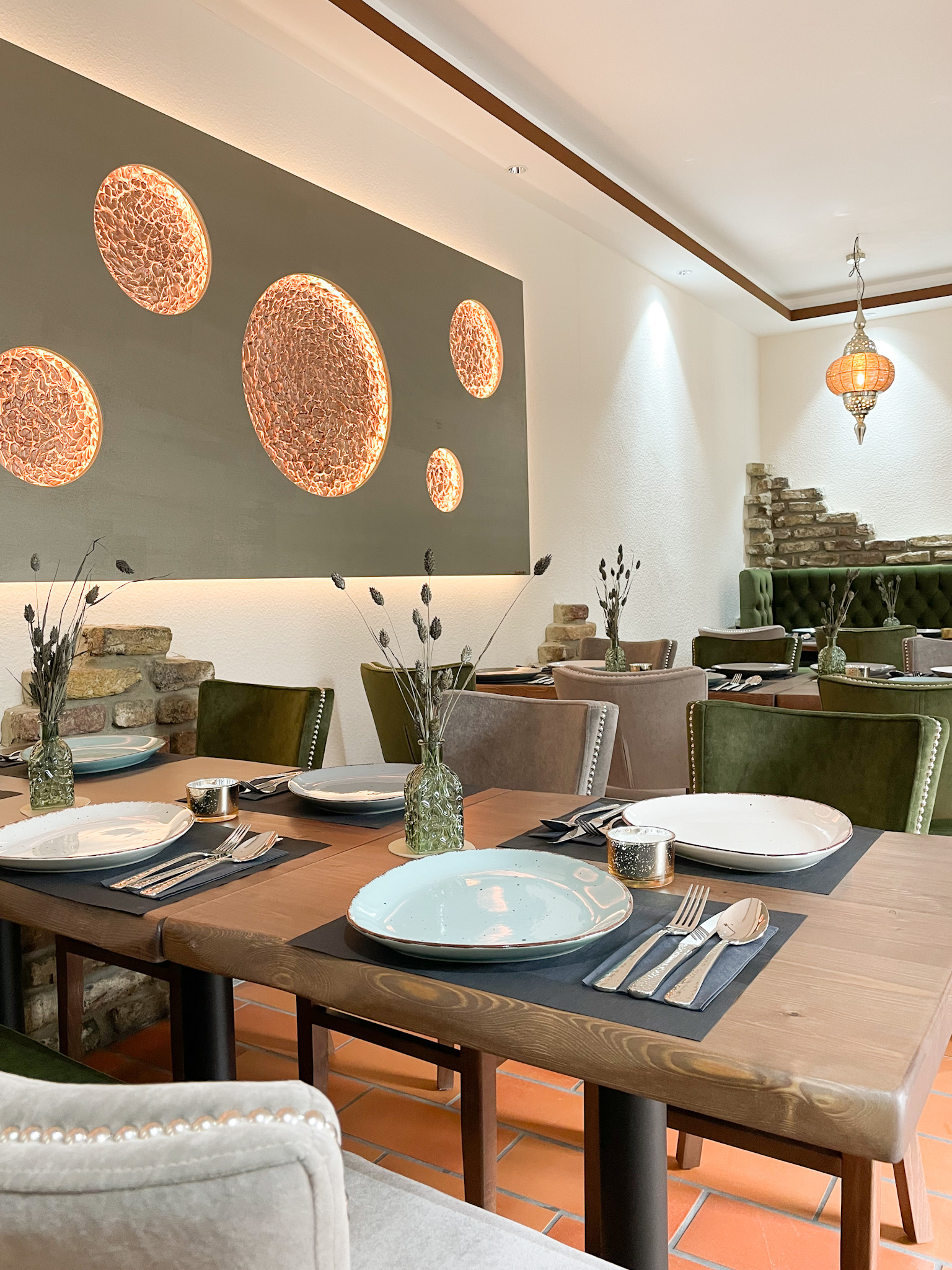
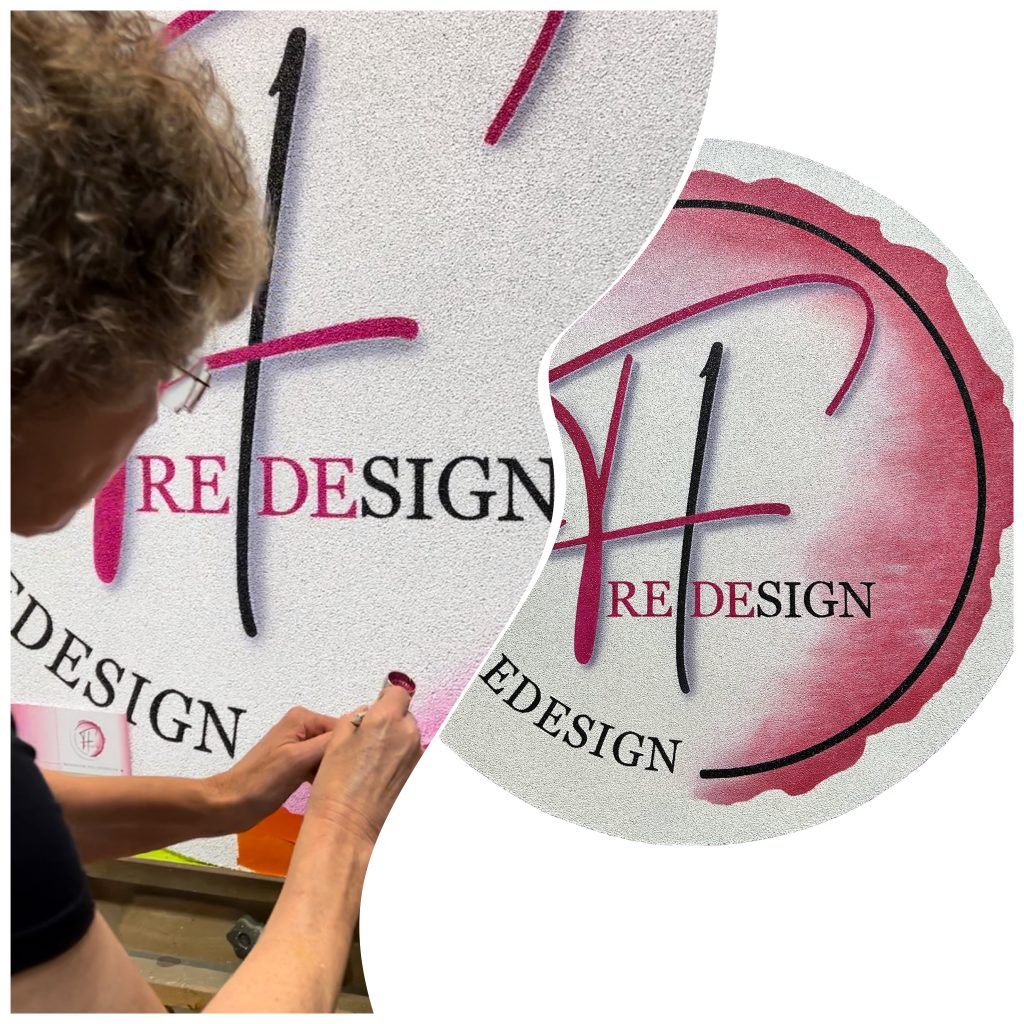
3. comfort and ergonomics:
Comfortable seating is a must! Invest in quality chairs and tables that are comfortable and contribute to the length of time guests stay. A thoughtful selection of furniture and its arrangement can increase comfort and enhance the overall experience.
4. design and decoration:
The design and decoration of your restaurant should reflect your brand and concept. Creative wall art, interesting decorative elements and stylish table decorations can enrich the visual experience of guests.
Individually created floor logos on quartz gravel are an exciting and innovative design option. The so-called Qubo® Paintings are seamlessly integrated into stone carpets and are an absolute eye-catcher.
5. lighting and atmosphere:
The right lighting can have a significant impact on the atmosphere of your restaurant. It can be romantic, relaxing or energizing, depending on your goals. Dimmable light sources allow you to adapt the lighting to different times of day and occasions.
6. music and background noise:
The background noise is an important aspect of hospitality. Make sure that the music volume is appropriate to allow conversation without it being too loud.
7 Sustainability and trends:
Sustainability and eco-friendly design elements are a major trend in the hospitality industry today. Consider how you can integrate eco-friendly materials, energy-efficient lighting and resource-saving practices into your design concept.
8 Personalized experiences:
Consider the needs of your target group and adapt the interior design accordingly. An informal atmosphere for a family restaurant or a more chic ambience for fine dining can increase the success of your business.
Interior design in the restaurant industry is an exciting process that can take your restaurant to the next level. It can help attract guests, gain the loyalty of regular customers and make your restaurant a place where people want to return. A well thought-out design concept doesn’t just cover the visuals, but extends to the entire culinary experience in your restaurant.
Interior design in the office: Increase efficiency, comfort and productivity
The office is not just a place where work gets done, but also a space where creativity should be encouraged, ideas exchanged and teamwork fostered. Office interior design can help optimize the work environment while increasing productivity and employee well-being. Here are some aspects that should be considered in such a design process:
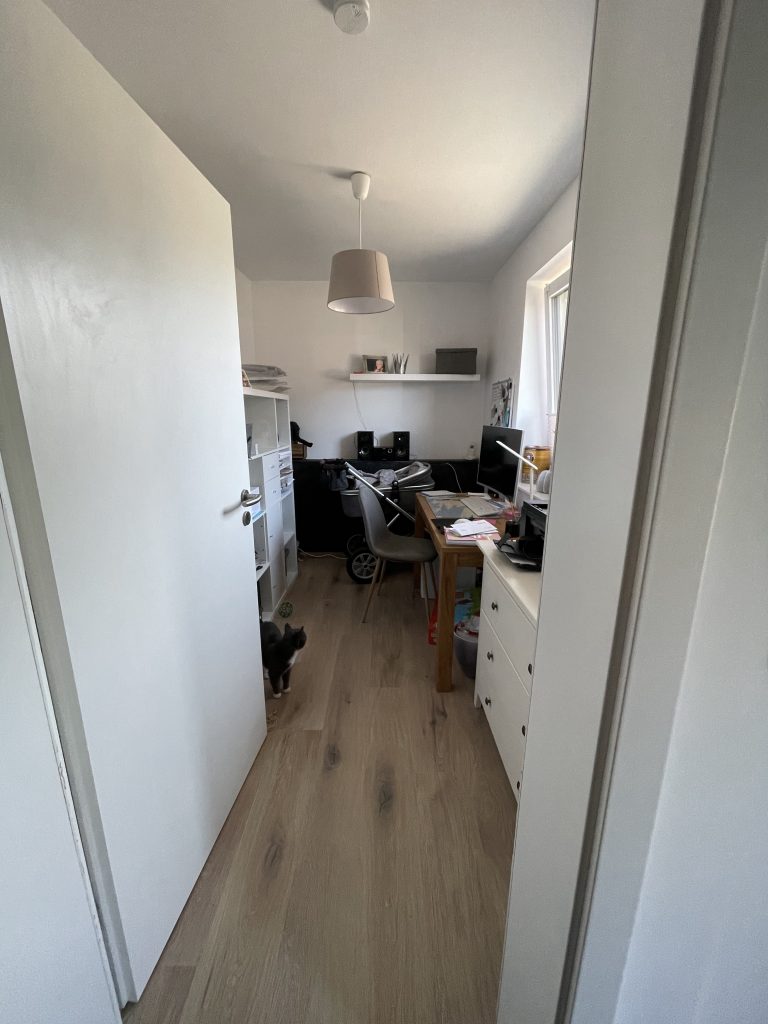
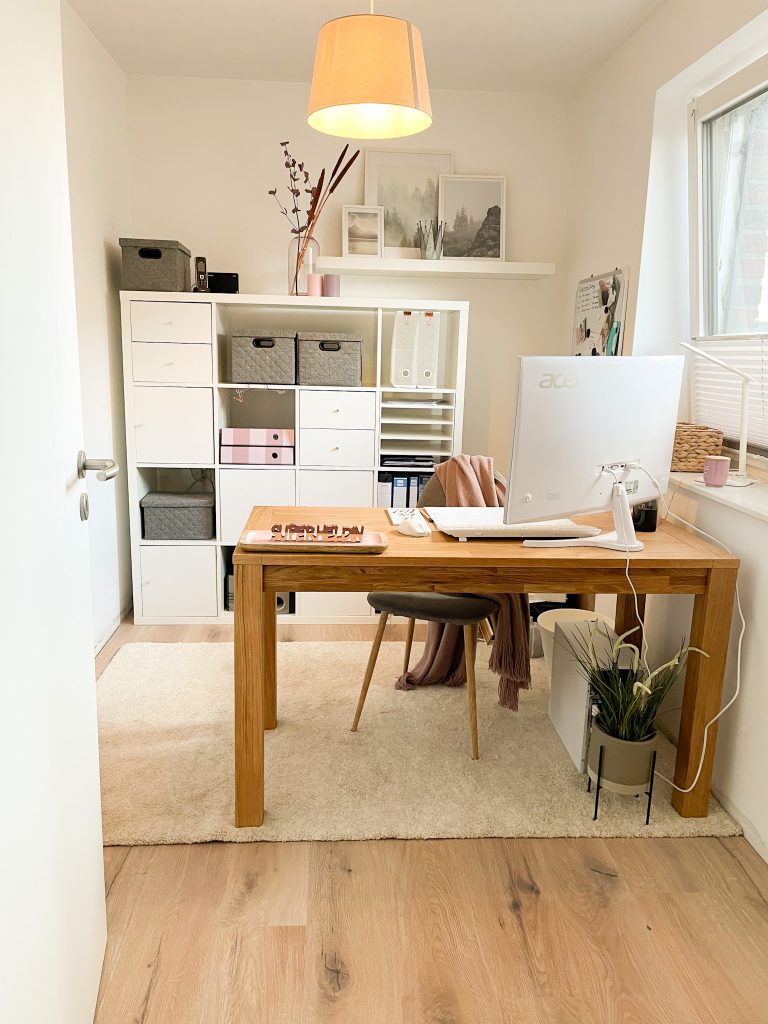
1. ergonomics and comfort:
The health and well-being of employees is paramount. Invest in ergonomic office furniture, such as height-adjustable desks and ergonomic chairs, to increase work efficiency and minimize back problems. Comfortable seating in communal areas and break rooms promotes relaxation.
2. workstation arrangement:
The arrangement of workstations should promote teamwork and interaction without compromising employees’ privacy. Open office concepts, flexible desk sharing and cozy corners for informal meetings can increase efficiency.
3. color design and lighting:
The choice of colors and lighting plays a crucial role in office design. Bright, friendly colors can stimulate creativity, while sufficient natural and artificial lighting promotes productivity. Dimmable luminaires allow employees to adjust the lighting conditions to their needs.
4. employee participation:
Involve employees in the design process. Their needs and preferences should be taken into account. By creating flexible workspaces and opportunities to customize their own workspace, employees often feel more comfortable and motivated.
5. technology and connectivity:
Modern offices need a reliable technological infrastructure. Ensure that the office equipment meets the requirements for wireless connectivity and modern communication.
6. communal areas and quiet zones:
Create different spaces for different working styles and needs. Communal areas for informal meetings and quiet zones for concentrated work or relaxation can increase employee satisfaction.
7. sustainability and environmental awareness:
Environmentally friendly materials, energy efficiency and resource-saving office furniture are important trends in office design today. A sustainable approach not only contributes to environmental protection, but also saves costs.
8. brand identity and corporate culture:
The office should reflect the corporate culture and values. The design should harmonize with the brand identity and give employees a sense of belonging.
Office interior design can not only influence the working environment, but also increase employee satisfaction, motivation and productivity. An attractive and functional office design creates an inspiring atmosphere in which employees can reach their full potential. It is an important step towards a modern and effective workplace.
Further services of Interior ReDesign FH Photography, videography, color consulting, purchasing consulting, visualization
In addition to her outstanding work in the field of interior design, Frederike Hansen offers a multifaceted range of other services that fully express her creativity and expertise. She acts not only as a designer of spaces, but also as an artistic visionary in the world of visual media. Her skills also extend to the fields of photography and videography. With her eye for detail and technical finesse, she precisely captures the characteristics of each space and presents them in an impressive visual language that conveys the essence of the space.
In addition, her service is characterized by color consulting that goes far beyond the mere color scheme. She knows how to use colors as living elements that can transform the mood and atmosphere of a room.
Her interior design consultancy is another cornerstone of her services, where she not only pays attention to quality and style, but also considers the individual needs and character of her clients.
Additionally, she supports clients by providing visualizations for space planning. Through her ability to transform ideas and concepts into immersive and realistic representations, she enables her clients to empathize with their future spaces and fully grasp the potential of each environment.
With this comprehensive portfolio of services, Frederike Hansen provides her clients with optimum support in interior design and the development of design concepts.

